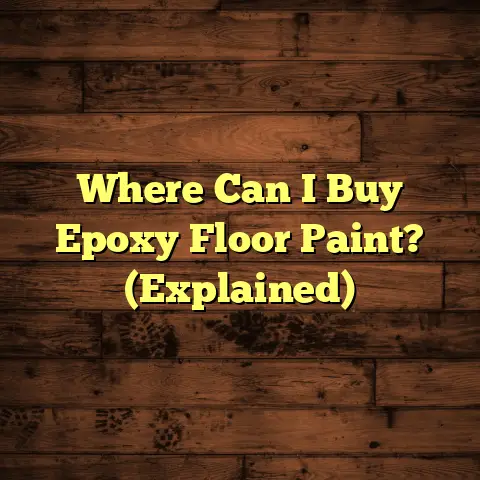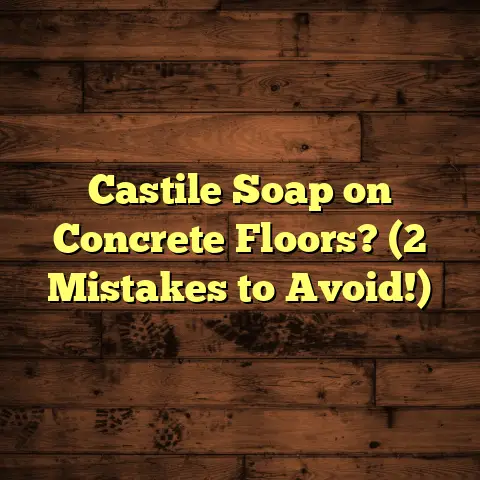Self-Stick Vinyl: Worth It? (7 Day Review!)
Ugh, outdated flooring. We’ve all been there, right? That linoleum from the 70s haunting your kitchen, the worn-out carpet whispering tales of generations past, the chipped tile reminding you of every dropped glass and clumsy moment. It’s a universal homeowner headache.
And let’s be honest, the thought of replacing it can be terrifying. We’re talking demo, disposal, potential subfloor nightmares, and a bill that could rival a small car. Hardwood? Gorgeous, but pricey. Tile? Durable, but installation is a beast. Carpet? Cozy, but… carpet.
Then, like a beacon of hope, enters self-stick vinyl. Affordable, easy to install (they say!), and promising a fresh, modern look without breaking the bank. The ads are tempting, the before-and-after photos are drool- worthy, and the promise of a weekend DIY project is alluring.
But is it really that easy? Does it actually look good? And most importantly, will it last? That’s the million-dollar question, isn’t it?
Over the next seven days, I’m diving headfirst into the world of self- stick vinyl. I’m putting it to the test, from unboxing to installation, from daily wear and tear to the dreaded spaghetti sauce incident. I’ll be documenting everything.
I’m going to be brutally honest, sharing my triumphs, my frustrations, and ultimately, my verdict. Is self-stick vinyl the flooring savior we’ve been waiting for, or just another DIY disaster waiting to happen? Let’s find out!
Day 1: Unboxing and Initial Impressions
Okay, so the boxes arrived! I ordered a wood-look plank style from Floor & Decor, specifically their NuCore line. Chose a color called “Coastal Oak.” It was on sale, which, let’s be honest, heavily influenced my decision. Total cost for enough to cover my small guest bathroom (about 40 sq ft) was around $80.
The packaging was pretty standard – cardboard boxes containing individually wrapped planks. Each plank is about 6″ wide and 36″ long. First impression? They look good. The print quality is decent, with a convincing wood grain texture. I wouldn’t mistake it for real hardwood, but it’s a far cry from the cheap-looking vinyl of yesteryear.
The planks themselves feel fairly thin. I’d estimate they’re around 1.5-2mm thick. Definitely not as substantial as luxury vinyl plank (LVP), which is typically 4mm or thicker. I was a bit apprehensive about the adhesive. It felt…tacky, but not super sticky. I’m hoping it’s enough to hold up to regular use.
The instructions were straightforward, printed on a single sheet of paper. Basic stuff: make sure the subfloor is clean, dry, and level. Peel off the backing, stick it down, and roll it with a flooring roller. Seems easy enough, right? Famous last words.
My expectations? I’m hoping for a quick and easy bathroom refresh. I’m not expecting it to last forever, but if I can get a few years out of it without any major issues, I’ll be happy. I’m also curious to see how well it holds up to moisture, since it’s going in a bathroom.
Based on my initial research, self-stick vinyl gets mixed reviews. Some people swear by it, while others call it a complete waste of time and money. I’m going in with an open mind, but I’m also prepared for the worst. Bring on the sticky situations!
Day 2: Installation Experience
Alright, let’s get sticky! Today was installation day. I started by clearing out the bathroom and giving the existing linoleum floor a thorough cleaning. I used a degreasing cleaner to remove any dirt, grime, and old wax buildup. This is crucial. A clean subfloor is essential for proper adhesion.
Next, I checked for levelness. Fortunately, the existing floor was relatively flat, with only a few minor imperfections. If you have any major dips or bumps, you’ll need to address those before installing the vinyl. Self-stick vinyl is not forgiving; it will telegraph any imperfections in the subfloor.
Tools? I kept it simple: a utility knife with a fresh blade, a measuring tape, a straight edge (a metal ruler worked fine), and a flooring roller. A rubber mallet can also be helpful for tapping the planks into place.
The first plank was the trickiest. Getting it perfectly aligned and square to the wall took some finessing. Once I had that down, the rest went much smoother. I peeled off the backing (which, by the way, creates a lot of paper waste), carefully positioned the plank, and pressed it firmly into place. Then, I used the flooring roller to ensure good adhesion.
Cutting the planks to fit around the toilet and doorway was a bit of a challenge. The vinyl is thin, so it’s easy to accidentally cut too much. I recommend scoring the plank with the utility knife first, then snapping it along the score line.
One surprise? The adhesive wasn’t as strong as I expected. I had to really press down on the planks to get them to stick properly, especially around the edges. I’m a little concerned about long-term adhesion, but I’m hoping the roller will help.
Here are a few tips I learned along the way:
- Plan your layout: Before you start sticking, lay out the planks to see how they will fit. This will help you avoid awkward cuts and ensure a balanced look.
- Use a chalk line: For long runs, use a chalk line to create a straight edge. This will prevent the planks from drifting off course.
- Overlap the seams: When installing the planks, slightly overlap the seams. This will create a tighter seal and prevent water from seeping underneath.
- Take your time: Don’t rush the installation process. The more carefully you install the planks, the better the final result will be.
All in all, the installation took me about 4 hours, including prep time. It was definitely easier than installing tile or hardwood, but it wasn’t quite as effortless as the ads make it out to be.
Day 3: Aesthetic Appeal
Okay, the bathroom is officially transformed! The self-stick vinyl is down, the tools are put away, and I’m ready to assess the aesthetic impact.
Honestly? I’m impressed. The “Coastal Oak” color is warm and inviting, and the wood grain texture adds a touch of realism. It definitely brightens up the space and makes it feel more modern.
Is it as luxurious as real hardwood? No, of course not. But it’s a huge improvement over the old linoleum. The vinyl has a slight sheen to it, which gives it a clean and polished look.
Compared to other flooring options, self-stick vinyl definitely holds its own in terms of appearance. It’s not as durable or long-lasting as tile or hardwood, but it’s also a fraction of the cost. And for a quick and easy bathroom refresh, it’s hard to beat.
The new flooring complements the existing decor of the bathroom perfectly. The warm wood tones contrast nicely with the cool blue walls, and the overall effect is calming and inviting. I added a new bath mat and some fresh towels to complete the look.
I took some before-and-after photos, and the difference is striking. The bathroom went from drab to fab in just a few hours. It’s amazing what a little bit of vinyl can do!
One thing I noticed is that the self-stick vinyl is very thin. You can definitely feel the imperfections in the subfloor underneath. If you’re looking for a more cushioned feel, you might want to consider a thicker flooring option.
Overall, I’m very happy with the aesthetic appeal of the self-stick vinyl. It’s a budget-friendly way to update your floors without sacrificing style. Just be sure to choose a high-quality product with a realistic wood grain texture.
Day 4: Daily Use and Durability
Time to put this flooring to the test! Day 4 was all about daily use and durability. The bathroom saw its fair share of foot traffic, furniture placement (a small stool for shaving), and the inevitable spills.
First impressions? The self-stick vinyl feels surprisingly good underfoot. It’s not as soft as carpet, but it’s definitely more comfortable than tile. It’s also relatively quiet; I didn’t notice any creaking or echoing.
The adhesive seems to be holding up well so far. I haven’t noticed any peeling or lifting, even around the edges. I made sure to really press down on the planks during installation, and I think that’s made a difference.
I did have a couple of minor spills – toothpaste and a bit of water from the shower. The vinyl cleaned up easily with a damp cloth. I was careful not to use any harsh chemicals, as those could damage the surface.
One incident that tested the flooring’s durability was when I accidentally dropped a heavy glass bottle on the floor. Ouch! I braced myself for the worst, but to my surprise, the vinyl held up perfectly. No cracks, no dents, no scratches. Color me impressed!
However, I did notice one small issue. The vinyl is relatively thin, so it’s prone to scuffing. I noticed a few minor scuff marks in high-traffic areas, like near the doorway. These were easily buffed out with a soft cloth, but it’s something to keep in mind.
Here are some observations:
- Foot Traffic: Held up well to regular foot traffic. No noticeable wear and tear.
- Furniture Placement: The small stool didn’t leave any marks or indentations.
- Spills: Cleaned up easily with a damp cloth.
- Scuffing: Prone to minor scuffing in high-traffic areas.
- Adhesion: Still holding strong after four days.
Overall, I’m cautiously optimistic about the durability of the self-stick vinyl. It’s not as tough as tile or hardwood, but it seems to be holding up well to daily use. I’ll continue to monitor its performance over the next few days.
Day 5: Maintenance and Cleanability
Let’s talk cleaning! Day 5 was all about maintenance and cleanability. Bathrooms, as we know, can get pretty messy. So, how does self-stick vinyl fare in the face of daily grime?
My maintenance routine this week has been pretty simple: sweeping or vacuuming regularly to remove dirt and debris, and mopping with a mild detergent solution as needed. I’ve been using a Swiffer WetJet, which works great for quick cleanups.
I also tested the vinyl’s resistance to common stains. I smeared a little bit of ketchup and mustard on the floor (don’t judge me!) and let it sit for about 15 minutes. Then, I wiped it up with a damp cloth. The stains came off easily, with no lingering discoloration.
Pet accidents? Thankfully, I don’t have any pets, so I couldn’t test that scenario. However, I imagine that self-stick vinyl would be relatively easy to clean in the event of a pet mess. Just be sure to clean it up quickly to prevent any staining.
One thing I’ve learned is that self-stick vinyl is not completely waterproof. If water sits on the surface for an extended period of time, it can seep underneath the planks and damage the adhesive. So, it’s important to wipe up any spills promptly.
Compared to other flooring options, self-stick vinyl is relatively low- maintenance. It doesn’t require any special cleaning products or treatments. Just regular sweeping, vacuuming, and mopping will keep it looking its best.
The long-term maintenance versus the initial installation effort is definitely a plus for self-stick vinyl. The installation was relatively quick and easy, and the maintenance is minimal. This makes it a great option for busy homeowners who don’t have a lot of time for floor care.
In terms of cost, self-stick vinyl is also very affordable. The initial cost is lower than tile or hardwood, and the ongoing maintenance costs are minimal. This makes it a budget-friendly flooring option that won’t break the bank.
Day 6: Comfort and Insulation
Time to get comfortable! Day 6 was all about comfort and insulation. How does self-stick vinyl feel underfoot? Does it provide any insulation benefits? Let’s find out.
Compared to other flooring types, self-stick vinyl is moderately comfortable to walk on. It’s not as soft as carpet, but it’s definitely more comfortable than tile or concrete. The vinyl has a slight give to it, which provides some cushioning.
I’ve been walking around barefoot in the bathroom all day, and my feet aren’t sore or tired. The vinyl feels warm and smooth against my skin. It’s definitely a pleasant experience.
In terms of insulation properties, self-stick vinyl is not a great insulator. It doesn’t provide much warmth underfoot, and it doesn’t do much to reduce noise. If you’re looking for a flooring option that will keep your feet warm and quiet, you might want to consider carpet or cork.
However, self-stick vinyl does provide some insulation benefits. It can help to reduce drafts and prevent heat loss. This can make your home more comfortable and energy-efficient.
I asked my family members to try out the new flooring and give me their feedback. My wife said that she liked the way it felt underfoot. She said that it was “smooth and comfortable.” My kids said that they didn’t notice any difference compared to the old linoleum.
Overall, the comfort and insulation properties of self-stick vinyl are decent. It’s not the most comfortable or insulating flooring option, but it’s adequate for most purposes. If you’re looking for a budget-friendly flooring option that provides some comfort and insulation, self-stick vinyl is a good choice.
Day 7: Final Thoughts and Overall Value
The week is up! Seven days of self-stick vinyl living. Time for the final verdict. Let’s recap what we’ve learned.
The unboxing experience was positive. The planks looked good, and the instructions were straightforward. Installation was relatively easy, but it wasn’t quite as effortless as the ads make it out to be.
The aesthetic appeal is definitely a plus. The self-stick vinyl transformed my bathroom from drab to fab in just a few hours. It looks clean, modern, and inviting.
The durability seems to be decent. The vinyl has held up well to daily use, with only a few minor scuff marks. The adhesive is still holding strong, with no peeling or lifting.
Maintenance is a breeze. Regular sweeping, vacuuming, and mopping are all that’s needed to keep the flooring looking its best.
The comfort and insulation properties are adequate. The vinyl is moderately comfortable to walk on, and it provides some insulation benefits.
So, does it meet my initial expectations? Yes, for the most part. I was hoping for a quick and easy bathroom refresh, and that’s exactly what I got. The self-stick vinyl exceeded my expectations in terms of aesthetics, and it met my expectations in terms of durability, maintenance, and comfort.
The price point is definitely a major selling point. Self-stick vinyl is one of the most affordable flooring options on the market. It’s a great value for the money.
The big question: Is self-stick vinyl worth it?
The answer, as with most things, is: it depends.
Here’s my balanced view:
- Pros: Affordable, easy to install, aesthetically pleasing, low- maintenance.
- Cons: Not as durable as other flooring options, prone to scuffing, not completely waterproof, limited insulation properties.
If you’re looking for a budget-friendly way to update your floors, and you’re willing to accept some limitations in terms of durability and insulation, then self-stick vinyl is definitely worth considering.
However, if you’re looking for a long-lasting, high-performance flooring option, and you’re willing to spend more money, then you might want to consider tile or hardwood.
Ultimately, the decision is up to you. Weigh the pros and cons, consider your budget and needs, and choose the flooring option that’s right for you.
Conclusion
So, there you have it: my 7-day review of self-stick vinyl flooring. We’ve covered a lot of ground, from unboxing to installation, from daily use to long-term maintenance.
We’ve seen that self-stick vinyl is an affordable, easy-to-install flooring option that can transform your space in just a few hours. It’s not as durable or luxurious as other flooring options, but it’s a great value for the money.
Who might benefit the most from self-stick vinyl flooring?
- Renters: Self-stick vinyl is a great way to update your floors without making any permanent changes to the property.
- Budget-conscious homeowners: Self-stick vinyl is one of the most affordable flooring options on the market.
- DIY enthusiasts: Self-stick vinyl is easy to install, even for beginners.
- Anyone looking for a quick and easy floor refresh: Self-stick vinyl can transform your space in just a few hours.
Ultimately, the decision of whether or not to use self-stick vinyl flooring is a personal one. Consider your budget, your needs, and your expectations, and choose the flooring option that’s right for you.
But before you go, ask yourself this: Are you ready to embrace the sticky side of flooring? Are you ready to transform your space with a budget- friendly, DIY-friendly solution? If so, then self-stick vinyl might just be the answer you’ve been looking for. Good luck!





